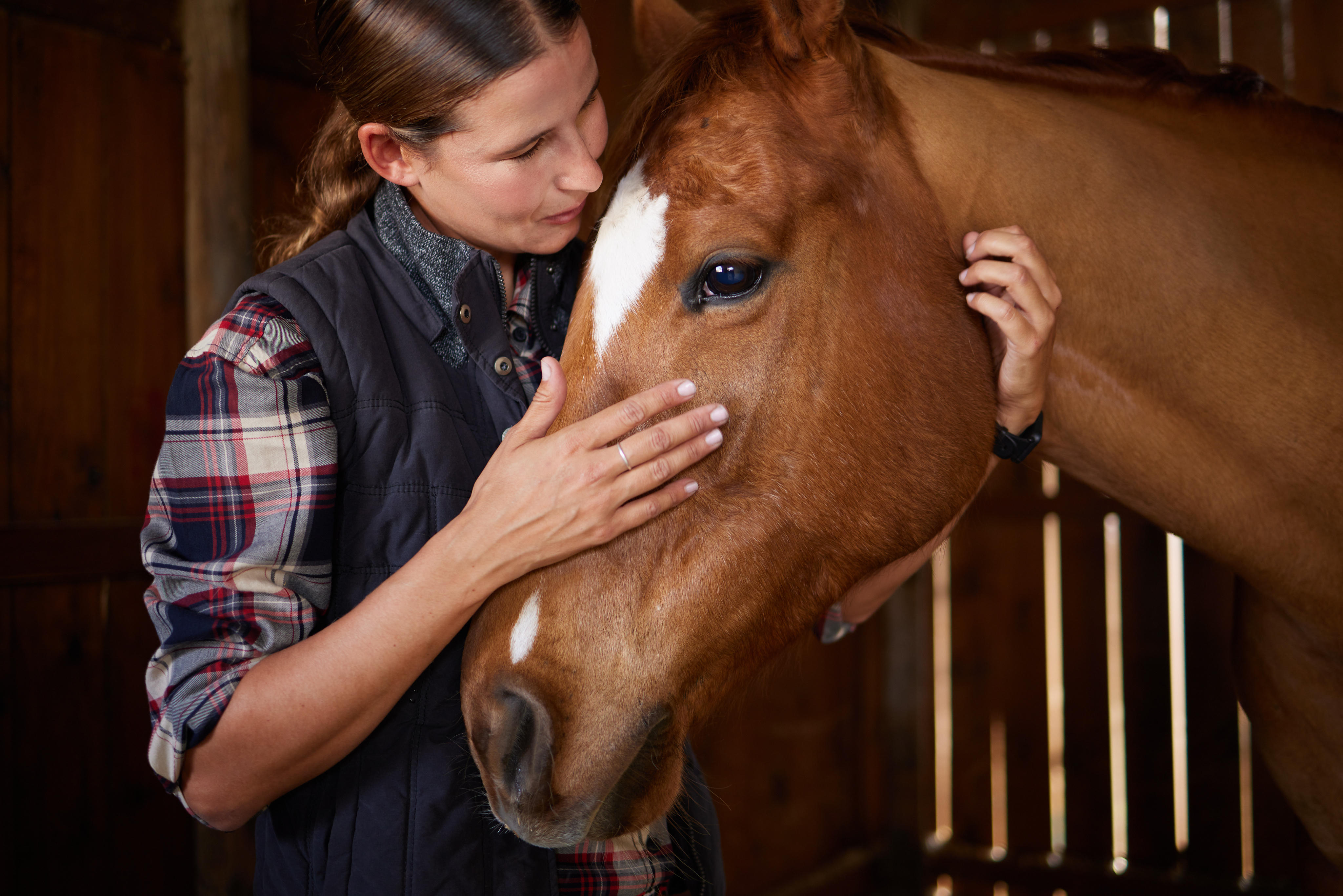Disease Overview
Tetanus is an often-fatal disease caused by the toxin produced by the anaerobic, spore-forming bacterium Clostridium tetani. C. tetani organisms are abundant in soil, making infection an ever-present risk.
Merck Animal Health Solutions
PRESTIGE® 5 + WNV
For the vaccination of healthy horses 6 months or older against EEE and WEE viruses, EIV, EHV-1, EHV-4, tetanus and West Nile Virus.
PRESTIGE® 5
For the vaccination of healthy horses 6 months or older against EEE and WEE viruses, EIV, EHV-1, EHV-4, and tetanus.
PRESTIGE® 4
For the vaccination of healthy horses 6 months or older against Eastern and Western encephalomyelitis, equine influenza virus and tetanus.
PRESTIGE® 3 + WNV
For the vaccination of healthy horses 6 months or older against Eastern and Western encephalomyelitis viruses, tetanus and West Nile Virus
PRESTIGE® 3
For the vaccination of healthy horses 6 months or older against Eastern and Western encephalomyelitis viruses and tetanus.
Transmission
Infection usually occurs via a puncture wound (especially in the foot or muscle), laceration, surgical incision, or exposed tissue such as a foal’s umbilicus or postpartum mare’s reproductive tract (especially in the case of trauma or retained placenta).
Clinical Signs
- Localized stiffness proceeding to general stiffness
- Muscle spasms
- Difficulty chewing (hence the common name “lockjaw”)
- Erect ears; stiff, extended tail; dilated nostrils; prolapsed third eyelid
- Difficulty walking, turning and backing
- Extension of head and neck
- Stiff leg muscles causing “sawhorse” stance
- Sweating
- Increased heart rate
- Rapid breathing
- Mucous membrane congestion
- Temperature slightly above normal
Risk Factors
Because the tetanus bacterium is so common in the environment, all horses are at risk.
References
- “Tetanus,” American Association of Equine Practitioners, accessed July 15, 2021,
aaep.org/guidelines/vaccination-guidelines/core-vaccination-guidelines/tetanus. - Henry R. Stämpfli, “Tetanus in Animals,” Merck Veterinary Manual, July 2021,
https://www.merckvetmanual.com/generalized-conditions/clostridial-diseases/tetanus-in-animals




 Go To United States
Go To United States Algeria
Algeria Argentina
Argentina Australia
Australia Austria
Austria Bahrain
Bahrain Belgium (Dutch)
Belgium (Dutch) Brazil
Brazil Canada (English)
Canada (English) Chile
Chile Colombia
Colombia Croatia
Croatia Czech Republic
Czech Republic Denmark
Denmark Ecuador
Ecuador Egypt
Egypt Finland
Finland France
France Germany
Germany Greece
Greece Hungary
Hungary India
India Indonesia
Indonesia Iraq
Iraq Ireland
Ireland Israel
Israel Italy
Italy Japan
Japan Jordan
Jordan Kuwait
Kuwait Lebanon
Lebanon Malaysia
Malaysia Mexico
Mexico Morocco
Morocco Netherlands
Netherlands New Zealand
New Zealand Norway
Norway Oman
Oman Panama
Panama Peru
Peru Philippines
Philippines Poland
Poland Portugal
Portugal Qatar
Qatar Romania
Romania Russian Federation
Russian Federation Saudi Arabia
Saudi Arabia South Africa
South Africa South Korea
South Korea Spain
Spain Sweden
Sweden Switzerland (French)
Switzerland (French) Taiwan
Taiwan Thailand
Thailand Tunisia
Tunisia Turkey
Turkey Ukraine
Ukraine United Arab Emirates
United Arab Emirates United Kingdom
United Kingdom Uruguay
Uruguay Yemen
Yemen Global
Global